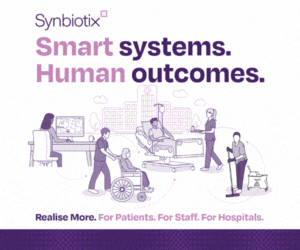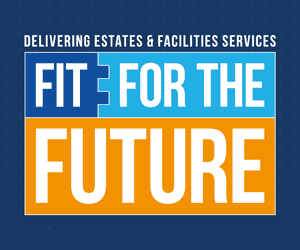Mike Sanders, CEO of Intouch with Health, tells HEFMA why the right technology, used at the right time, can be transformational for healthcare in a post COVID-19 world. Integrated correctly within the patient journey, it becomes a vital tool that supports clinicians, not hinders them, and contributes to a much-improved experience for patients.
The right technology, used at the right time, facilitates long-term change and creates an eco-system of integrated solutions that work as one to manage patient flow; think everything from a patient checking-in for their appointment on their smartphone, to clinicians booking follow-up appointments using electronic outcome forms.
The right technology, used at the right time, supports Trusts to play their vital part in delivering the NHS Long Term Plan, by facilitating waiting list reductions, supporting patients remotely and reducing the number of patients attending hospital for outpatient appointments and pre-operative assessments.
But when it comes to deploying such technology, Trusts must take a long-term look at how it can improve ways of working way beyond the coronavirus – and it is down to suppliers to help them do so.
Recent rapid transformation, while excellent, has exposed shortcomings
COVID-19 has meant the NHS has had to adopt new technologies and adjust to new ways of working at pace. The transformation is extremely impressive, although some shortcomings with the technology implemented to achieve it have been exposed.
Take video consultations as an example; the use of these has increased exponentially as patients isolate at home. However, amid the challenge to quickly connect clinicians and patients remotely, compromises have understandably had to be made. At many hospitals, no doubt, this will have led to some manual interventions and ‘work arounds’ being created. Soon, the focus will turn to how to integrate these new processes with the hospital systems and the existing clinical infrastructure.
Speaking at Intouch with Health’s Transforming Outpatient Services event in October 2019, Jonathan Lofthouse, former Director of Improvement at Liverpool University Hospitals NHS Foundation Trust, stated: “Some of the most significant challenges within the NHS include how we transform at pace within what is clearly a very challenging financial environment.”
I believe what the NHS has achieved recently proves it certainly can transform at pace, and that it can do so even in extremely challenging circumstances.
However, it is down to suppliers to appreciate the increasing demands within the healthcare environment in the forthcoming years and help the NHS take a long-term approach to deploying technology that will not only help them now, but way into the future.
Looking ahead with a joined-up approach in mind
So now this transformation has been kick-started, how do we maintain momentum?
The pace of change that has picked up - and the ways this has transformed working practices - has been quite remarkable. This should provide a huge boost of confidence and a springboard for Trusts to consider deploying new technology that will continue to reap rewards well after the pandemic is over.
Now, Trusts and suppliers must work together to understand how any technology introduced to aid digital transformation, whether now or in the coming months, will integrate to improve operational efficiency, not serve to create additional challenges. Even technology deployed at pace must not hinder long-term progress or an organisation’s long-term strategy.
These are the challenges hospitals and healthcare providers will face next
I’ll revisit the introduction of video consultations as an example. How do you marry up the patient and the doctor while at the same time collating the relevant data from the remote video consultation and updating it to the necessary systems?
Imagine you have a patient who has had a standard outpatient appointment in their diary for several months and they’re now unable to attend hospital because of the restrictions caused by coronavirus.
The first problem is the hospital is going to have to create that remote appointment and invite the patient to attend, and there is often no vehicle in place to do this easily.
Say the hospital gets around that and the patient receives a text message with their appointment details. They will log in on the specific day and wait for the appointment, but how do they know if the clinic is running late or the doctor is off sick? Nobody is managing the appointment and there is no way of knowing if the patient is the right person.
Next, the patient sees the clinician, but how does the clinician record next steps and ensure sure they are actioned? When a doctor sees a patient in hospital, they have access to several systems, which they may not have when working remotely.
These are the sorts of challenges hospitals and other providers will start to face next.
A short-term perspective on technology will stifle change
It is vital that these scenarios are played out and evaluated when suppliers and Trusts consider the most appropriate digital technology. If the NHS is to continue realising the benefits of video consultations for example, in the long-term, it is essential that suppliers can deliver the functionality and integration that is absolutely required to ensure ease-of-use and ROI in healthcare settings. This would include functionality such as patient authentication, facilitating a virtual waiting room, enabling real-time outcome recording for clinicians and, perhaps most importantly, ensuring integration into a Trust’s existing PAS / EPR.
If new technology serves limited functionality within the healthcare environment, we risk ending up with a portfolio of disjointed solutions that will only serve to stifle change and impede operational efficiency, not deliver it.












